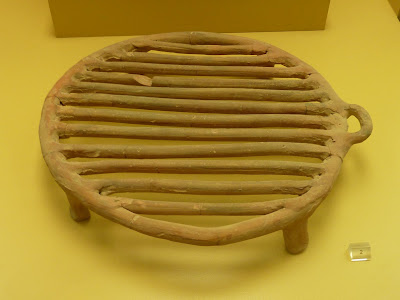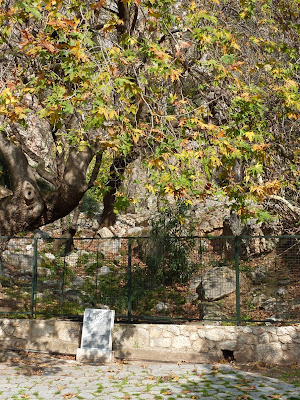The Oracle of Delphi is one of the most famous places of antiquity, and, after the Acropolis, contemporary Greece's most-visited site. From the earliest twilight of classical Greece, in the 7th and 8th centuries BCE, right on through Hellenistic times and into the Roman era, no important issue of city, state, or family, was decided without consulting the famous oracle, said to be the voice of Apollo, the one trustworthy god. Delphi, as archaeologists and geologists now think, was all about location, location, location. It is on a steep southern buttress of Mt. Parnassus, overlooking the Gulf of Corinth, in about as unlikely a place for a town or a shrine as one can imagine. But it is at the intersection of two faults, and at this intersection, methane, ethylene and other light gases were emitted. Inhaling them, it was discovered (initially through the odd behavior of a flock of goats), brought about trance-like and other unusual behaviors. In its earliest stages, Delphi was a shrine to the Mother Goddess, Ge, but, so the story goes, Apollo showed up (from Asia Minor; remember our post on Letoon, the shrine to his mom, Leto? Of course you do), and killed the snake, Pythes, who was assigned to guard the place. Since then it has been Apollo's place, blessed by the presence and wisdom of the Oracle. Over the many centuries, local women were placed in the depths, on a tripod chair, breathed the gases, and uttered strange and interesting things, which were then "interpreted" by the priests, in response to whomever had paid to get the advice. The advice was always vague/multiply ambiguous, something that could neither be verified nor falsified straightforwardly. We
are talking about religion here. Also in hexameter, which added to the thrill. In any case, there were enough satisfied customers over the ages for Delphi to become the ancient world's #1 oracle. Minimum fee was a loaf of bread. Wealthier clients, like cities, when pleased, would leave vast monuments and treasures (e.g., Athens, which was told to trust in its "wooden walls," i.e., its fleet, in the 2nd Persian war). The Oracle operated well into the 4th century, but was closed, as were all other "pagan" sites, by the Christian emperor Theodosius. The remains of these monuments and treasures, after further centuries of Roman and Christian looting and plundering, earthquakes, landslides, etc., are in the museum at Delphi and other museums. Delphi was excavated largely by the French, in the 19th century.
 |
A model of the upper, main, bits of the sanctuary, in its
hey-day
|
 |
Along one of the stoa, en route to the temple, where you
could pick up last minute offerings, souvenirs
|
 |
The polygonal wall, below the temple, along another stoa
|
 |
On its stones were written, among other things, documents
freeing slaves...
|
 |
On this pedestal once stood the serpentine column
celebrating the Greek vistory over the Persians at Plataea;
we saw it, or remains of it, a couple months ago in the
Hippodrome at Constantinople/Istanbul
|
 |
On the way up to the temple, looking back to the Athenian
"treasury" and the one of the "omphalos" markers, just
to the left of the treasury building; Delphi was
considered the center of the earth, its navel, hence,
"omphalos" (it's a long story)
|
 |
Columns of the temple of Apollo, where the oracle (sibyll)
did her thing
|
 |
View of the temple; Vicki says the Oracle's station was to
the right, under the collapsed flooring
|
 |
Theatre at Delphi, not huge, but Greek
|
 |
The stadium at Delphi, home of the Pythian Games, second
only in importance to the Olympic Games ("Pythian"
because the snake Apollo killed was the Python (no relation
to Monty)); home of the Pything contests ("that's a myth";
"yeth?")[running gag]
|
 |
The gymnasium, beneath the main sanctuary
|
 |
And the Temple of Athena, one of the stations of the cross,
so to speak, for pilgrims to the Oracle
|































































